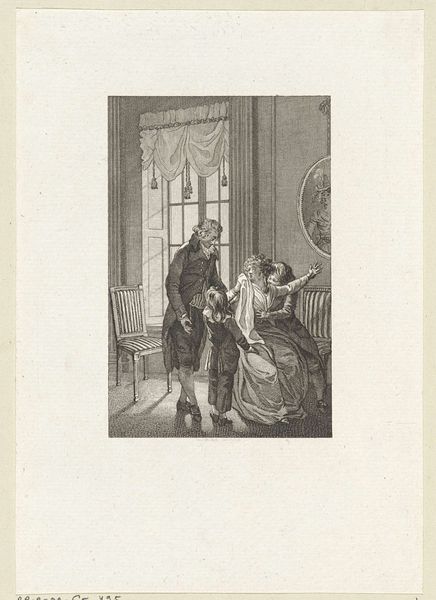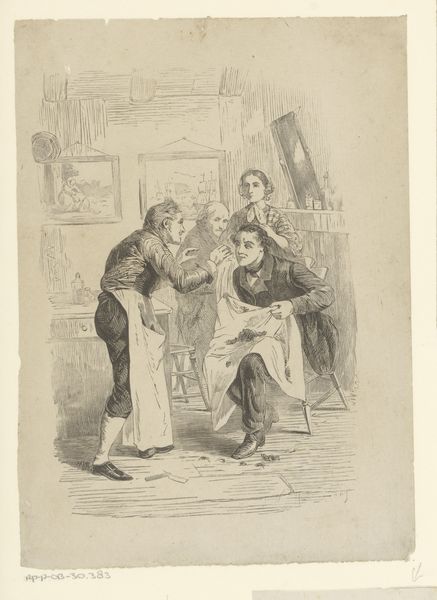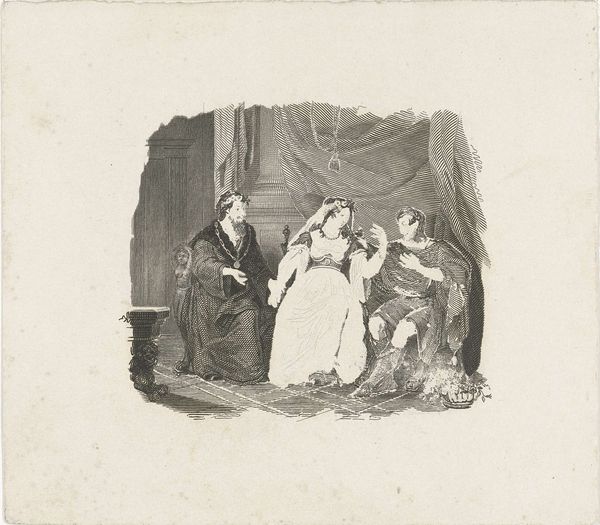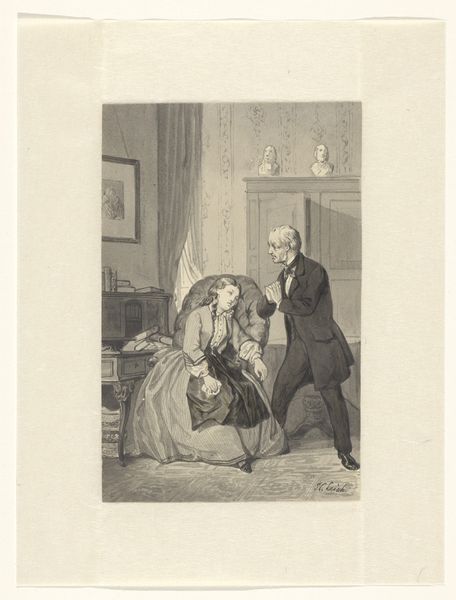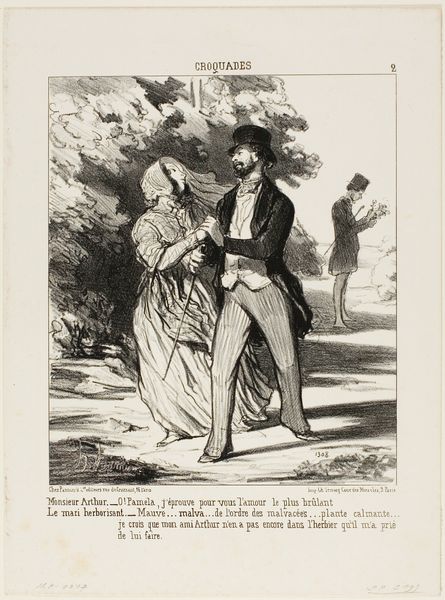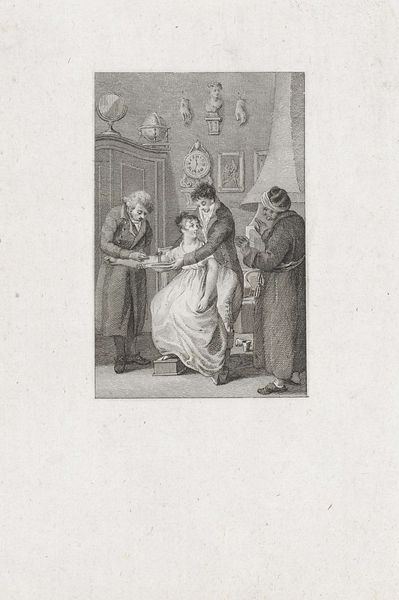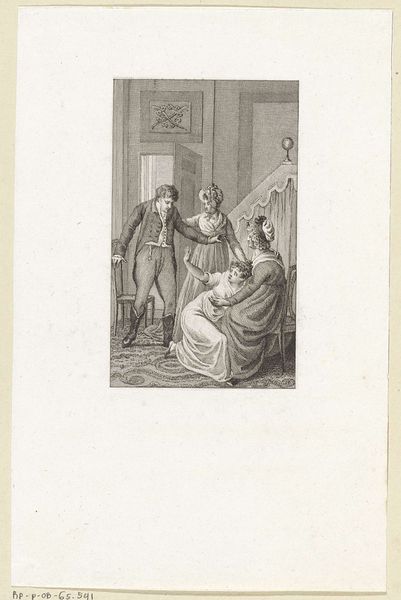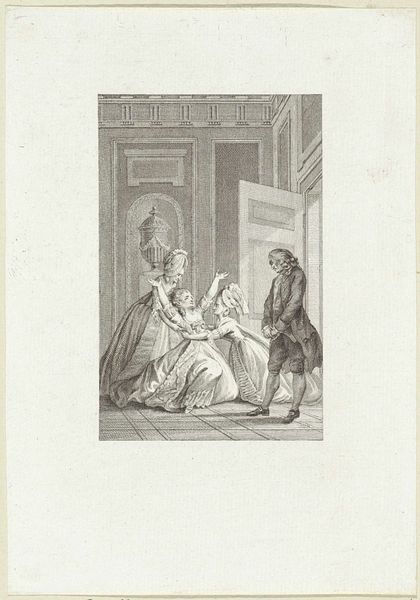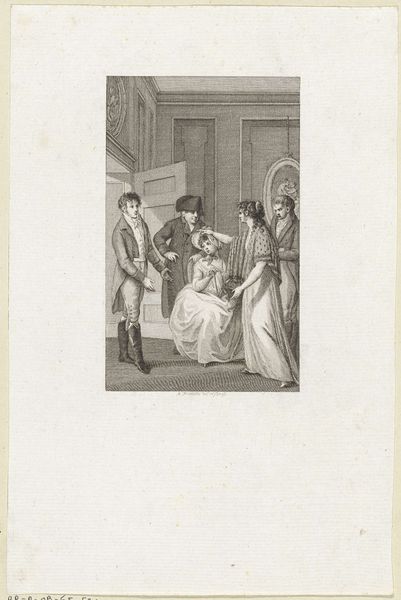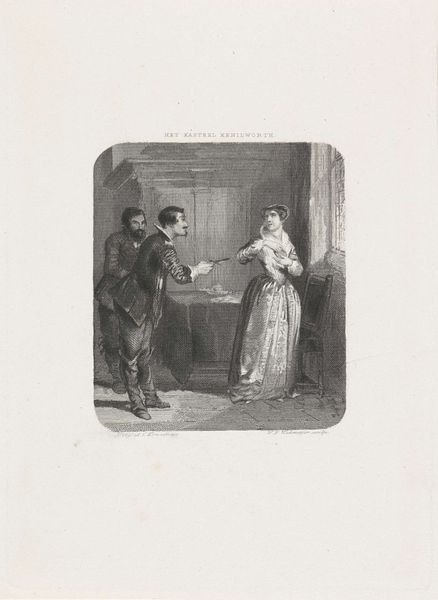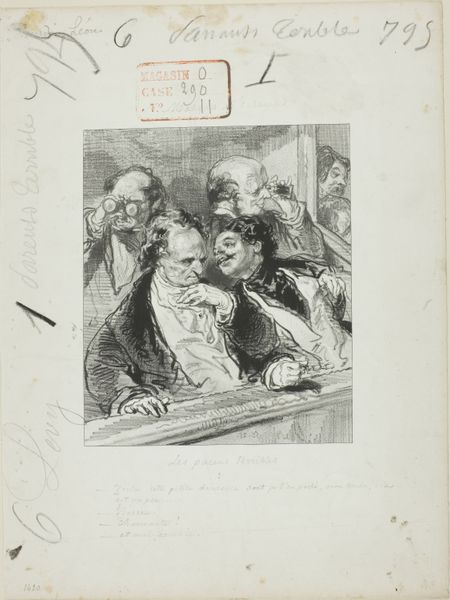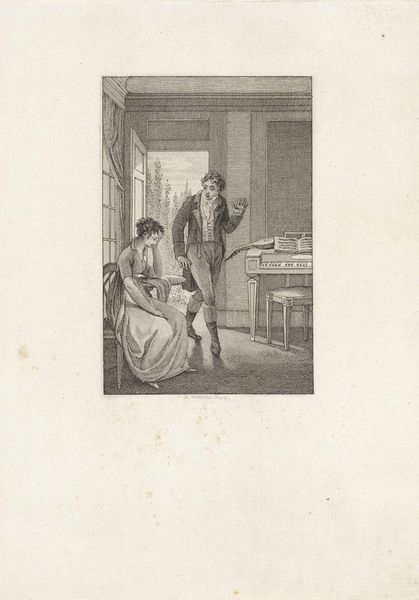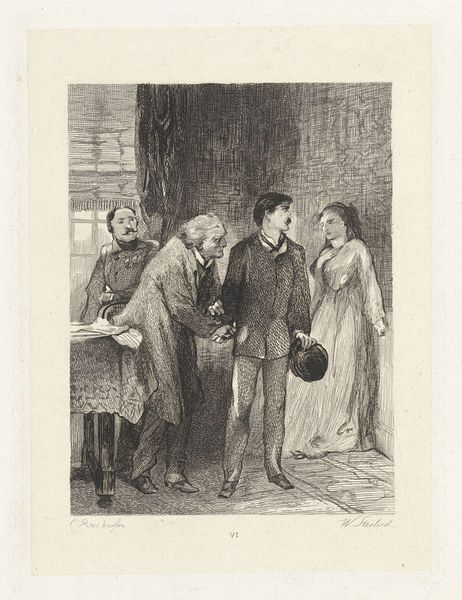
Dimensions: height 145 mm, width 118 mm
Copyright: Rijks Museum: Open Domain
Rombertus Julianus van Arum created this print, "Interieur met vier figuren," using etching. It depicts a domestic scene in what appears to be the Netherlands. Looking at the setting, the well-dressed figures, and the interior decor, we can tell that this is a privileged, middle-class household. The central interaction between the man and woman suggests a moment of farewell or perhaps reconciliation, laden with unspoken emotions. But what exactly is happening here? The image itself is full of codes. The other figures – the seated woman and standing man – observe passively, adding to the sense of constrained social performance. The choice of etching as a medium also speaks to the cultural context. Prints like these were often reproduced in books and periodicals, circulating ideas about morality, family, and social order. It may have also commented on the social structures of its time, perhaps offering a critique of bourgeois values. The historian can research the significance of such imagery and by exploring literature, periodicals, and social histories of the time, we can understand the social conditions that shape artistic production and interpretation.
Comments
No comments
Be the first to comment and join the conversation on the ultimate creative platform.
